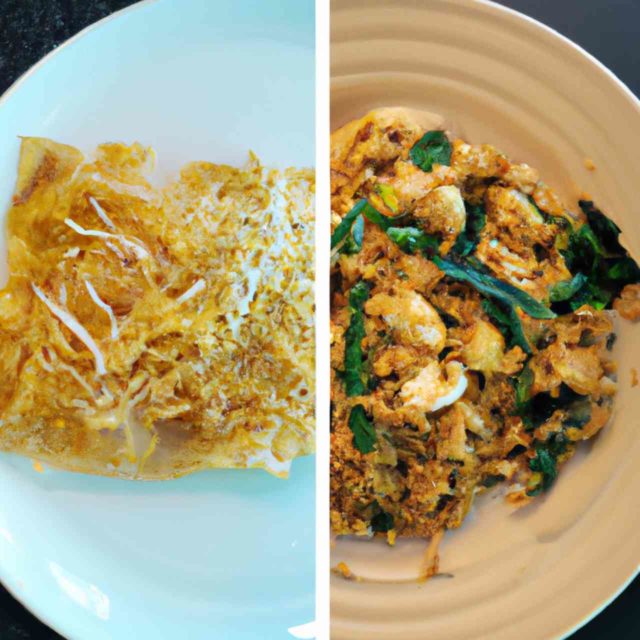Pad Thai and Drunken Noodles are both popular Thai dishes, but they have distinct differences in terms of their ingredients, preparation, and flavor.
Pad Thai vs Drunken Noodles: How Are They Different?
Thai food has become increasingly popular in recent times, with two of the most popular dishes being Pad Thai and Drunken Noodles.
While both are delicious and enjoyable, there are some distinct differences between the two dishes that make each unique they all revolve around the following criteria.
- Ingredients Used
- Taste Profile
- Noodle Type
- Sauce Used
- Heat Level
- Vegetables Used

Plus, see how to store leftover egg noodles.
Here Are the Main Points of Comparison Between Pad Thai Compared Against Drunken Noodles
- Flavor Profile: Pad Thai is known for its sweet and tangy flavor (usually has a small amount of tamarind and fish sauce), while Drunken Noodles are known for their spicy and bold flavor coming from a savory sauce base.
- Ingredients: Pad Thai typically includes peanuts and lime wedges for garnish, while Drunken Noodles are typically served with Thai basil.
- Sauce: Pad Thai is typically stir-fried with a sweet and tangy sauce, while Drunken Noodles are stir-fried with a spicy sauce.
- Spiciness: Pad Thai is a more balanced dish (it has palm sugar also), and it is usually less spicy than Drunken Noodles.
- Origin: Pad Thai is a traditional Thai dish, while Drunken Noodles, also known as Pad Kee Mao, is a Thai dish but was more influenced by “Thai- Chinese”)
- Popularity: Both Pad Thai and Drunken Noodles are popular in Thai restaurants and can be found on most Thai menus, but Pad Thai is considered to be one of the most famous Thai dish and a staple food in the streets of Thailand.
- Protein: Pad Thai is commonly made with protein such as chicken, shrimp, or tofu, while Drunken Noodles can also be made with proteins like chicken, beef, or shrimp.
- Vegetables: Both Pad Thai and Drunken Noodles are made with a variety of vegetables, but Pad Thai includes vegetables such as bean sprouts, carrots, and peanuts, while Drunken Noodles may include vegetables such as bell pepper and Thai basil.
How to add even more flavor to noodles.
What Are Pad Thai Noodles
Pad Thai is traditionally made with thin, round rice noodles, also known as “sen lek” or “rice stick” noodles.
What Are Drunken Noodles
Drunken noodles are typically made with wide, flat rice noodles.
Comparison Pad Thai vs Drunken Noodles Comparison
The main difference between Pad Thai and Drunken Noodles is their flavor profile. Pad Thai is known for its sweet and tangy flavor, while Drunken Noodles are known for their spicy and bold flavor. Pad Thai is a more balanced dish and it is usually less spicy than Drunken Noodles.
Another difference between the two dishes is their preparation. Pad Thai is typically stir-fried with a sweet and tangy sauce, while Drunken Noodles are stir-fried with a spicy sauce.
In terms of ingredients, Pad Thai typically includes peanuts and lime wedges for garnish, while Drunken Noodles are typically served with Thai basil.
Pad Thai vs Drunken Noodles In Calories
Although take-out food is not usually thought of as being good for your health, Thai cuisine can be surprisingly nutritious. Additionally, most Thai dishes are relatively low in calories.
Pad Thai, as well as Drunken Noodles both, have a medium calorie count. Basically they are not good, but neither are they bad.
For average services, they are slightly under 375 calories.
Conclusion
Wrapping it up, both Pad Thai and Drunken Noodles are delicious Thai dishes that offer unique and distinct flavors. Pad Thai is a sweet and tangy dish that is perfect for those who prefer a less spicy dish, while Drunken Noodles are a bold and spicy dish that is perfect for those who love bold flavors. Both dishes are popular in Thai restaurants and can be found on most Thai menus.